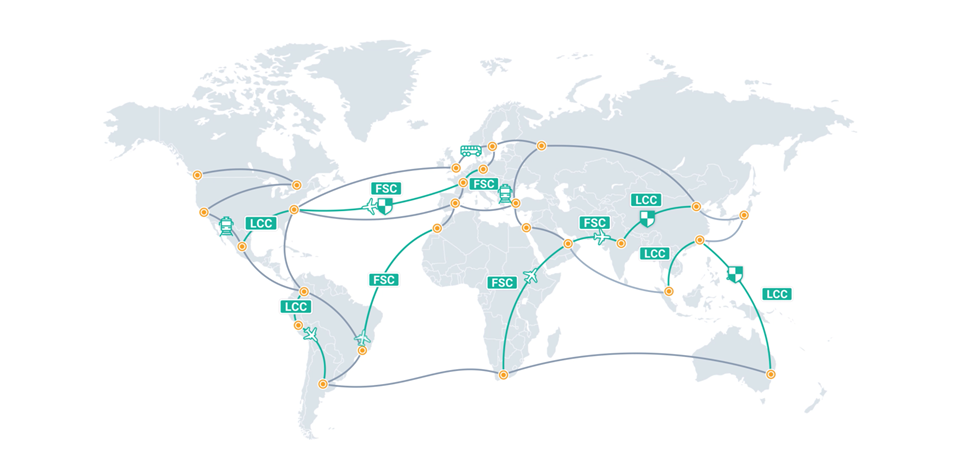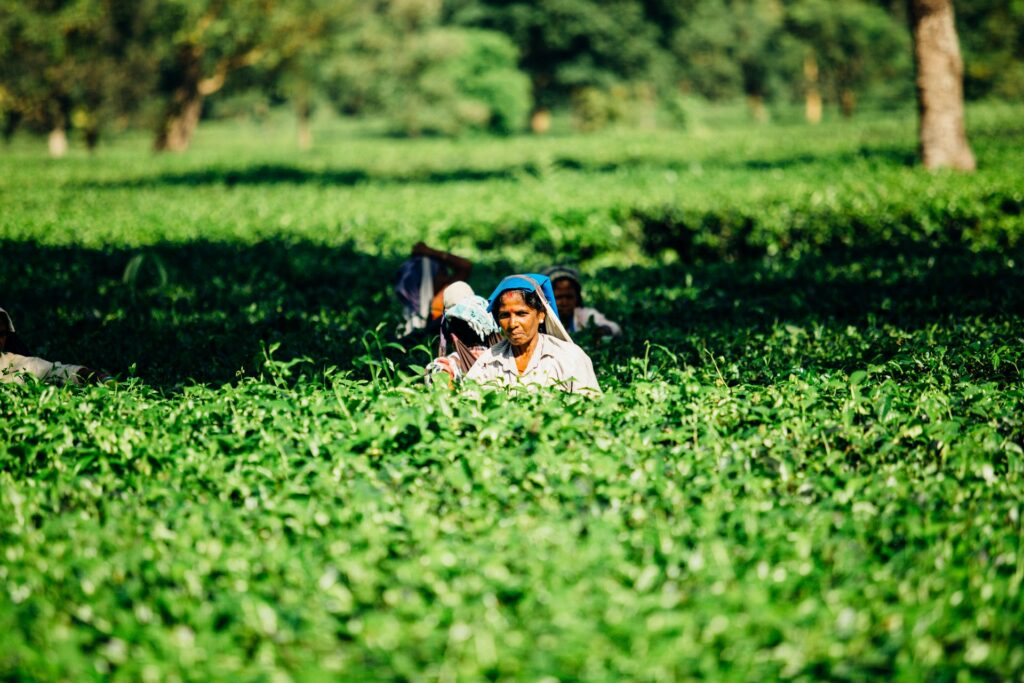Airlines and Flight OTAs: Road to Recovery

By Oliver Dlouhy, Co-Founder & CEO, Kiwi.com
Airlines and online travel agencies (OTAs) are working on ways to operate in the post-pandemic world. Will there be a different approach to recovery from full-service carriers (FSCs) and the low-cost carriers (LCCs)? How important will the role of innovation be in the recovery? How will the OTAs react?
First, let’s look at some forecasts.
The International Air Transport Association (IATA) expected very stable and strong growth: 8 billion passengers in 2020 and over 11 billion by 2025. But then the pandemic came.
Here you can see what the pandemic did to these forecasts: a steep drop in 2020. According to IATA, it will take 4 to 5 years for the number of passengers to recover to 2019 levels.
What does that mean in practice? These are very high-level numbers and a single-dimensional view. Let’s have a closer look at one of the possible scenarios of industry transformation that could lie behind these numbers.
The impact of COVID-19 on airlines
Here we shall look at the airlines and their stock price since the start of the pandemic till March 2021.
On the left side you can see the LCCs, on the right side the FSCs. Many LCCs are trading at or even beyond their pre-pandemic share price, while FSCs struggle to recover, at least in terms of stock price.
This is mainly because of the specifics of long-haul and short-haul travel. As we know, long-haul is mostly the FSCs’ domain, while almost all LCCs fly shorter routes. Long-haul flights are largely dependent on premium cabins. There is a high yield on Business Class and it enables the airlines to sell the economy tickets at a very low price.
The highest-yielding business class seats have been historically booked by corporate travellers, or at least a big portion of them. They require last-minute bookings and flexibility, which drove lots of revenue to the airlines.
But now, when even the most rigid corporations were forced to embrace the remote collaboration principles, it will be much harder to justify corporate travel at the scale that we were used to pre-pandemic.
Corporate travel certainly will not disappear, but it will take disproportionally longer to recover compared to leisure travel. There will be fewer business class seats sold, and that means higher economy fares, which inevitably results in lower demand for long-haul flights.
There is another implication. Usually, the FSCs operate the hub-and-spoke models with short-haul feeder flights. These are largely subsidized by the long-hauls. Thus not only are the FSCs going to lose a portion of the long-haul traffic and demand, the economics of their short-haul operations will also be negatively affected.
Here are the actions the airlines are likely going to take.
Transformation to the point-to-point model
First, they will want to transform their models from hub-and-spoke to point-to-point. They need to make sure that every route is profitable on its own without the need to be subsidised by the long-haul. They need to do it by pushing down the costs and increasing the yield by unbundling of services like baggage, seating or meals, and also sophisticated product attachment including accommodation, insurance, or any other product that is relevant for the travelers.
Reconfiguration of planes
I also expect the airlines to start reconfiguring the cabins on their planes. We can expect more All Economy or Premium economy wide bodies. We can also expect an emergence of all business class long-haul narrow bodies to serve the premium demand at lower costs and prices.
Smaller and more efficient planes on shorter routes
The era of super wide-body planes is over and they will be replaced by smaller aircrafts that are more efficient on both short and long-haul and are much easier to fill. This will enable even the long-haul routes to be profitable in the point-to-point model, without the feeders.
Unbundling
Also, there will be a strong push towards unbundling, even on the long-haul routes, to ensure the profitability of the simplified networks without any dependencies. Even on the long-haul flights, it will not be a standard to have a free checked baggage, seat selection or these kinds of perks that currently many airlines bundled with the price.
Virtual Interlining
The typical interlining will slowly disappear. It is very expensive and complex for the airlines and anything but transparent and intuitive for the customer. With the simple point-to-point model being much more prevalent, third-party platforms will simply combine any flight with any other and take the full responsibility for such itinerary. This is called the Virtual Interlining.
What about the OTAs?
Scale is king
In the highly commoditised business, scale is king. There is no room for small players. The economy of scale plays a big role so we can expect small OTAs to disappear. Also, the local flight OTAs will become irrelevant, except for some specific markets like Brazil, Russia, India, Indonesia or China. We can expect many shutdowns in the industry, many companies going down and quite a strong consolidation.
Metasearch to Metabooking
When it comes to the metasearch platforms like Kayak or Skyscanner, I expect them to transform into metabooking platforms. They started the transformation even before the pandemic, but I believe that this will accelerate. They will have direct booking capability and New Distribution Capability (NDC) connection to the airlines.
Due to the decreasing diversity of OTAs, there will remain only a handful of them distributing through the metasearches. The metasearches will become very airline-centric, and metasearches will also become the biggest competitors to the flight OTAs.
For the remaining OTAs, it will become extremely important to differentiate from the metasearches and from each other as well.
How to differentiate as an OTA
One way to differentiate is to provide Virtual Interlining, and ultimately build a unique inventory based on the raw airline content.
We can also expect different kinds of subscription plans to emerge that will bring added value, possibly flexibility, better prices, high level of the customer support to the customers and loyalty to the agency.
Last but not least, there are many ways to take advantage of the airline revenue management systems to expose fares or connections that the airline just did not want the customers to find. By the way, airlines hate these hacks, but customers love them. Because they can save big time on every single ticket just by being a little bit smarter. There are a couple of OTAs that are exposing these gaps in the airline revenue systems to the customers. Airlines hate it, but customers love it and all we do is for the customers, right?
Conclusion
First, COVID-19 accelerated innovation in the industry. I am saying “accelerated” because it was not a revolution. All of these things were already happening. There is nothing new about virtual interlining, subscription, hacking or changing from wide bodies to narrow bodies even on long-haul flights. COVID-19 and the pandemic really accelerated the transition and I believe that ultimately it helped also many companies, airlines and OTAs included, to differentiate, to find their unique business models and to bring even more value to the customers. Those who have not yet found the unique business models or were not able to differentiate will just disappear—and I don’t think that’s wrong.
Second, customers can expect more diversified products and services provided by fewer players—that is important. There will be differentiation, but fewer players in the market. That will make it easier for the customers to find the right supplier and to find the right fit with the supplier.
Lastly, I also expect customers to become much more loyal to their supplier because the supplier will be very well differentiated and every single customer will be able to find their preferred supplier—OTA, airline or metasearch.













Responses